Table of contents
to travel
On the way Croatia
On the way Croatia
Mission island hopping
Few countries are as rich in islands as Croatia: there are 1185 islands, only 67 of them are inhabited. This promises a variety of landscapes between Mediterranean coasts, wild mountains and picturesque places. Jo Deleker (text and photos) also looked at the scars of a terrible war.
Joachim Deleker
08/25/2009
The first impression of a country often shapes the expectations of the upcoming trip. In this respect, Croatia should be a fantastic country, because I couldn’t have imagined the arrival better. At half past six in the morning, the three-quarter-empty ferry from Bari docks in Dubrovnik. The XT rolls in warm morning light and at subtropical mild temperatures on Croatian soil, is simply waved through by the border police. An ATM spits out a pack of fresh kuna without hesitation, the first notes of which are immediately converted into croissants and coffee. The view of the historic old town of Dubrovnik is speechless: behind the massive walls, up to six meters thick and 30 high, hides an ensemble of perfectly restored old houses.
Buy complete article

On the way Croatia
Mission island hopping
11 pages) as PDF
€ 2.00
Buy now
The mountain Srd promises the best view of the city. A narrow road climbs to the 400 meter high summit and reveals a breathtaking panorama. Far below is Dubrovnik, one of the most beautiful cities in Europe, and behind it is a dozen islands of all sizes in the Mediterranean Sea. Nevertheless, this top-class view not only makes for euphoria, but also for a big lump in the throat. Up here stands the mountain station of the former cable car, bombed by Serbian artillery, a depressing monument made of shattered reinforced concrete, a reminder of the cruel years of the Yugoslav war, which ended just 18 years ago.
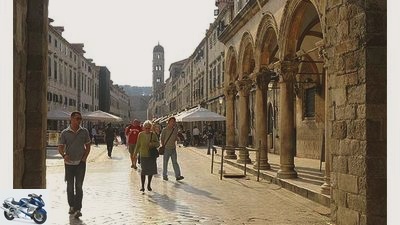
Deleker
Dubrovnik, the most beautiful city in Croatia, seduces with its picturesque old town with Mediterranean charm. There is something to discover behind every wall and in every alley.
I look for a campsite before I calmly explore millennial Dubrovnik. In the Middle Ages, Ragusa, the name of the city at the time, vied with Venice to be the greatest sea power in the Mediterranean. The splendor of the fat years can still be seen today, streets paved with marble, beautiful palaces, noble houses and churches, an exciting open-air museum for architecture and culture. Today tourists take care of the wealth of the city, strolling through sinfully expensive boutiques and art shops, populating ice cream parlors and restaurants. Life could hardly be more Italian.
The next day I give myself the complete contrast program, dare a detour to nearby Bosnia-Herzegovina. The border guard doesn’t understand me, neither do I. He seems a bit at a loss until I give him my passport, he puts the stamp in and nods to me without emotion. So go. The land and the sky seem to match the facial expressions of the border guards: gray and contourless. The almost traffic-free road winds through uninhabited hills. Black charred bushes on white limestone bear witness to the devastating fires of last summer.
The first big city – Trebinje – makes me illiterate, all signs are in Cyrillic. I follow my nose and actually find the right exit, the M20 to the north. The mountains get higher, the sky lighter, the bushes greener. Everything already looks much friendlier. Unlike in Croatia, I hardly see any new cars. Yugos, Zastavas and Ladas shape the picture. But the Bosnians’ favorite mobile seems to be the VW Golf II.
Tourism does not take place here. No hotels, no signs of sightseeing, the Adriatic beaches are far. I roll westward on back roads, pass through small towns between karst mountains and thousands of meters and finally reach Stolac. Actually a nice place with a castle, a church, two mosques and street cafes where only men sit. If it weren’t for the many shot and burned-out houses and a much too large cemetery with new tombstones. The war takes on a face, the lump in the throat swells. And yet something friendly and lively is happening: a honking convoy of around 30 cars roars through the city, a wedding party. Laughing faces, candies are thrown from open windows.
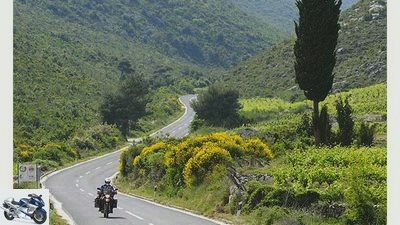
Deleker
The Peljesac peninsula is the second largest peninsula in Croatia after Istria. Around 70 kilometers long and only a few kilometers wide, it spoils you with grippy curves and an inspiring landscape.
Still, I’m relieved when I’m back in Croatia in the evening and aiming for the island of Pelješac. The road curves through lush green mountains, the slopes are densely overgrown with holm oak forests and vines. The famous heavy red wine Dinga? Grows here, but also the not quite so exclusive Plavac, which I test with due respect in the Podgorje restaurant in the evenings. The menu reveals in bumpy German: “Plavac Badel, enjoyable, very accessible, moderate finish.”
On the other side of the strait that separates Pelješac from Korcula, the medieval town of the same name beckons. The most famous son of Korcula is Marco Polo, the legendary world traveler. In the 13th century he traveled for years to explore completely unknown regions such as Tibet, Madagascar and Japan. Then he wrote his book “Description of the World”, the most translated literary work after the Bible.
The island of Korcula cannot compete with the charm of Pelješac, so I am back in Podgorje in the evening. The next ferry takes me over to the mainland to Ploce, where I meet the Jadranska Magistrale, the coastal road famous for its beauty that meanders from Rijeka 600 kilometers to Dubrovnik. But the beauty is still limited, the view over the crystal clear sea is not bad, but the high mountains of the Dalmatian Alps are covered in dark clouds. In addition, countless mobile homes and trucks that prevent smooth driving are annoying. And then there are the absurd speed limits. Before every bend, no matter how wide the radius, 50 or 60 signs slow me down. Even a fully loaded Boss Hoss would never take advantage of her modest lean angle at this speed.
I would have loved to drive up the mountain road to the 1762 meter high Svetli Jure, but thunder and lightning drive me on to Trogir. A city to feel good. Ancient walls, narrow cobbled streets, the wide promenade lined with palm trees with numerous cafes, beautiful wooden sailing ships on the quay and the mighty castle watches over everything. Only the moped has to stay outside of the historic old town.

Deleker
World cultural heritage and world wonder: the Plitwice Lakes, a fantastic spectacle of water, water, water.
The weather means it less well to me, there is a fixed low over the Adriatic Sea. So I’m rescheduling, leaving the sea and heading for the Plitwice Lakes National Park near the Bosnian border. As soon as I’ve left the coast behind, the scenery changes: a surprising expanse in lush greenery with old beech forests, a few small towns and high mountain ranges on the horizon. There is hardly anyone around except me. Tempo 90 and enjoy. The capital of Croatia is the Adriatic, hardly a tourist gets lost inland.
Except for the Plitwice Lakes, Unesco World Heritage and tourist attraction in the hinterland. The Plitwice Lakes are a unique synthesis of the arts. For millennia, countless streams, rivers and cascades have nibbled their way through the white limestone, creating 16 lakes, almost subtropical dense vegetation and all conceivable forms of waterfalls from tiny to 36 meters high: narrow, wide, massive, playful, thundering, chuckling rustling or mumbling. All day long I walk over wooden walkways and narrow forest paths, can hardly get enough of the water world, in which Winnetou and Old Shatterhand were already looking for the treasure in the Silver Lake.
For the way back to the Mediterranean I look for the smallest streets on the map. Some of them mutate into stony slopes by themselves, a gift for the XT. Thistles, poppies and gorse sway in the warm wind. In small places like Donji Lapac, Udbina or Barlete I find nice cafes where nobody speaks English or German guaranteed. Now and then I come across traces of the murderous Balkan war, which I didn’t understand even then and which doesn’t seem to fit into this peaceful landscape at all. War is a foreign body everywhere. Serbs shot at Croats, Bosnian Muslims shot at Christian Croats, Serbian Croats shot at Croatian Serbs, and Serbian Serbs threw bombs on Croatian cities. In the Yugoslav multi-ethnic state, everyone apparently fought against everyone else. Even neighbors attacked each other just because they belonged to different ethnic groups. Ruined houses riddled with bullets and mine warning signs – not a few of the perverse landmines are Made in Germany – are still today a reminder of the most terrible war that Europe experienced after 1945.

Deleker
One of the most varied slopes climbs up into the Velebit Mountains to the Mali Halan Pass: rough gravel, great views, the setting for many Karl May films. Here Winnetou died in the arms of Old Shatterhand.
The high mountains of Velebit appear in front of me, pulling me out of the gloomy mood. The road climbs up to the Ostarijska Vrata pass, 938 meters high. The view is intoxicating. Far below, the blue-gray sea glistens in which the unreal island of Pag swims. Barren sand-colored hills without any vegetation create the illusion of huge dunes. The road descends to the Adriatic Sea, where I meet the Jadranska Magistrale again. Between Karlobag and Starigrad it finally triumphs over 70 wonderful kilometers, one curve chases the next, the best asphalt, each of the numerous bays is pleasantly circumnavigated. On the right the sea, on the left the steep Velebit mountains, up to 1757 meters high. But the climax still follows. Behind Obrovac a coarse gravel track winds up to the Mali Halan Pass, revealing postcard views of the sea and the bright, bizarre mountains of Velebit, which sometimes seem like miniature versions of the Dolomites.
The slope to Mali Halan is just one of many in Velebit. If I wanted to drive each of the legal gravel roads, I would probably be on the road for a week. But then I would hardly have time for the island world. So I limit myself to one more day in Velebit and then set my sights on Pag. Even up close, Pag looks strange with its bright, bare hills, more reminiscent of Arabian stone deserts than of the rainy Adriatic. Even the temperature makes in Arabic, rises well above 30 degrees. In the Gore-Tex jacket, the climate takes on tropical features, hot and very humid. But that can be remedied. I board the ferry to Karlobag and hide again in the cool forests of Velebit, navigating criss-cross along small paths to the north and only dash down to the sea in the evening.
The next day I roll to the island of Krk, known from crossword puzzles. The island overgrown with green macchia rises gently to the horizon. Nice, but not very varied. Perhaps the neighboring island of Cres has more to offer. The ferry takes me over. But after the spectacular Velebit, Cres can only inspire me to a limited extent. After all, the landscape is much more varied than on Krk. Vast scrubland, many fields, delimited by ancient stone walls, a quiet lake, sweet-smelling gorse and bays by the sea that look like a holiday.
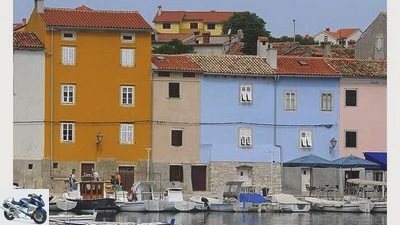
Deleker
The further north you get, the more “Italian” become the places. Colors are finally mixing up again. Here the port of Cres.
A narrow canal separates Cres from Losinj. This is exactly where Osor is located, an extraordinary artists’ place with 70 inhabitants. Numerous busts, sculptures and figures stand along the roughly cobbled village street, reminiscent of the Osor-born sculptor and illustrator Ivan Antolcic, a celebrity among Croatia’s artists. I continue to Mali Losinj, a hundred times bigger than Osor and of a completely different character. Pastel colored late Baroque town houses line the lively harbor, strolling and flirting on the wide promenade, drinking cappuccino and enjoying ice cream. Italy is not far anymore, the extroverted life is increasingly reminiscent of the neighboring country, and the houses are finally wearing color instead of dreary gray further south.
But I experience the color overkill the next morning when the ferry takes me from Cres to Istria and I reach Opatija. Pompous hotels, extravagant villas and wacky palaces bear witness to the heyday of the Austro-Hungarian seaside resort. The buildings do not show restraint, they are painted in bright colors. What a difference to strict Dubrovnik. But the perfect way to end a trip. So the first impression hadn’t promised too much.
Info
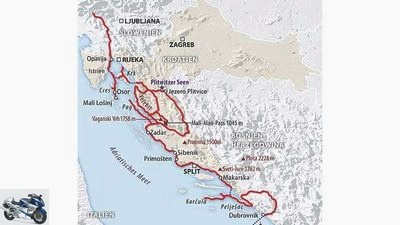
archive
Once along the Adriatic coast
Croatia has been a safe and easy to travel country for years. The traces of the war are rarely seen. On the other hand, great motorcycle routes beckon, in the hinterland also as slopes, the picturesque Mediterranean coast with its 1185 islands, historic cities such as Dubrovnik and the high mountains of Velebit.
Organized trip
The Motorrad Action Team offers an eight-day tour full of highlights through Croatia. Dates: September 12–19 / September 19–26. Price: 790 euros, information: by phone 0711/1821977 or www.actionteam.de
Travel time: two weeks
Distance covered: about 2500 kilometers
country
Capital: Zagreb
Area: 56542 km2
Independence: June 1991
Currency: Kuna (HRK)
Population: 4,491,543
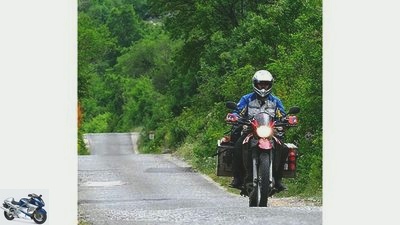
Deleker
getting there
From Cologne to Rijeka it is about 1100 kilometers, to Dubrovnik 1700. The fastest route is via Munich, Salzburg, Villach and Ljubljana. Motorways in Austria and Slovenia require a vignette. The journey with the DB Autozug, which runs weekly from Berlin, Hamburg, Frankfurt and Dusseldorf to Trieste, is less stressful and more comfortable. The return trip from Dusseldorf costs from 373 euros per person and motorcycle in the off-season. Early reservation is recommended. Information by phone 01805/241224 or at www.dbautozug.de
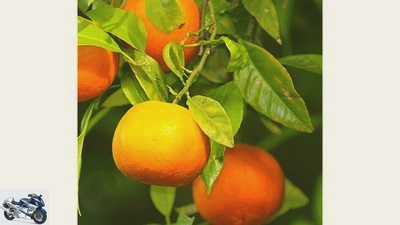
Deleker
Travel time
Along the Adriatic, motorcycle season is year-round, with the winter months being rainy, while the summers are often very dry. In the mountains, spring begins in April. Ideal travel times are May / June and September / October. It is not very relaxing during the main travel season in July and August. The resorts along the coast in particular are then overcrowded, accommodations are often occupied and it is extremely hot.
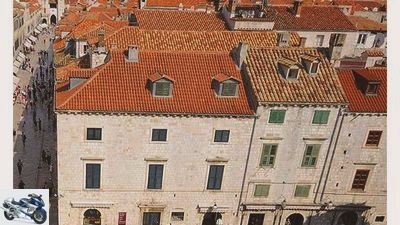
Deleker
accommodation
Along the coast and on the islands, the offer ranges from simple campsites for less than ten euros to elite five-star resorts. Private rooms are called “Sobe”. They are abundant on the Adriatic and are mostly signposted. In the hinterland, the offer is thinner, there are only a few campsites, but guest houses and private rooms can be found. Only in summer can the spontaneous search for accommodation take longer.
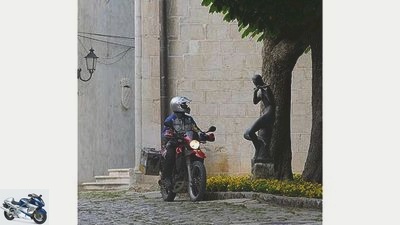
Deleker
literature
The best guides for independent travelers come from Michael Muller Verlag. Unfortunately, there is no complete volume for Croatia, but four individual books: Istria (15.90 euros), islands and coastal cities (20.90 euros), northern Croatia (18.90 euros) and central and southern Dalmatia (15.90 euros). The Croatia handbook from the Reise-Knowhow publishing house for 19.90 euros is also recommended, albeit in significantly less detail. The HB-Bildatlas for 8.50 euros and the ADAC travel magazine Croatia for 7.80 euros are suitable for getting in the mood at home. A good map is the waterproof sheet of Croatia from the Verlag Reise-Knowhow for 8.90 euros.
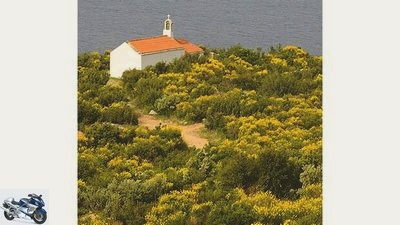
Deleker
Addresses
The easiest way to search for information is on the Internet, for example on these pages:
www.kroatien.de,
www.reiseinfo-kroatien.de,
www.reiseportal-kroatien.de,
www.reise-kroatien.eu
Related articles
-
Around Rijeka Croatia by motorcycle
Daams to travel Around Rijeka Croatia by motorcycle Out and about with a motorcycle in Croatia Sun, water, hot curves Some know it as a cheap holiday…
-
Motorcycle tour on the Dalmatian coast of Croatia
Iron ham to travel Motorcycle tour on the Dalmatian coast of Croatia Motorbike tour on the Dalmatian coast With mixed feelings A civil war raged on the…
-
to travel Croatia Croatia Calm after the storm There has been no fighting in Croatia for over two years. Since then, the former holiday paradise has been…
-
Motorcycle trip on Croatia’s Adriatic coast
Iron ham to travel Motorcycle trip on Croatia’s Adriatic coast Motorcycle trip on Croatia’s Adriatic coast Fantastic coastal roads and island trips…
-
Adventure travel – enduro riding in Croatia
Igor Spajia 14th pictures Tijac 1/14 Igor Spahija is one of the makers of Šibenik Adventure. The prices depend on the season. Spahija 2/14 The south of…
-
Jo Deleker to travel Travel: On the way in Corsica On the way: Corsica First encounter For many motorcyclists, Corsica is a dream destination for their…
-
to travel South America ?? Antarctic South America ?? Antarctic 42 degrees of latitude On two enduros through the Andes ?? from the Chilean Atacama…
-
Daams to travel Montenegro Montenegro Phoenix from the ashes The southernmost fjord, the deepest canyon and one of the last primeval forests in Europe ??…
-
Deleker 14th pictures Deleker 1/14 Once across: exploring the French and Spanish Pyrenees. Deleker 2/14 Explore the Pyrenees adventurously on gravel…
-
Motorbike Tour – Madeira (Portugal)
Deleker 14th pictures Deleker 1/14 The old north coast road is a spectacle for all the senses, you’ll never forget that. Deleker 2/14 Sunset on the Pico…